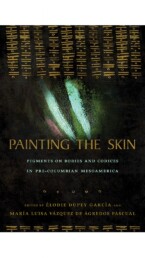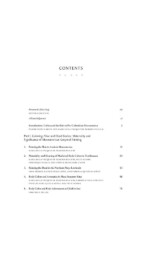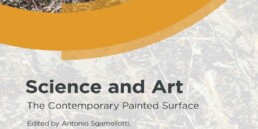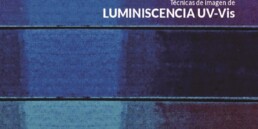Painting the Skin:
Pigments on Bodies and Codices in Pre-Columbian Mesoamerica
Editor: Élodie Dupey García, María Luisa Vázquez de Ágredos Pascual.
Contributing Authors: Costanza Miliani, David Buti.
Mesoamerican communities past and present are characterized by their strong inclination toward color and their expert use of the natural environment to create dyes and paints. In pre-Hispanic times, skin was among the preferred surfaces on which to apply coloring materials. Archaeological research and historical and iconographic evidence show that, in Mesoamerica, the human body—alive or dead—received various treatments and procedures for coloring it.
Painting the Skin brings together exciting research on painted skins in Mesoamerica. Chapters explore the materiality, uses, and cultural meanings of the colors applied to a multitude of skins, including bodies, codices made of hide and vegetal paper, and even building “skins.” Contributors offer physicochemical analysis and compare compositions, manufactures, and attached meanings of pigments and colorants across various social and symbolic contexts and registers. They also compare these Mesoamerican colors with those used in other ancient cultures from both the Old and New Worlds. This cross-cultural perspective reveals crucial similarities and differences in the way cultures have painted on skins of all types.
Examining color in Mesoamerica broadens understandings of Native religious systems and world views. Tracing the path of color use and meaning from pre-Columbian times to the present allows for the study of the preparation, meanings, social uses, and thousand-year origins of the coloring materials used by today’s Indigenous peoples.











